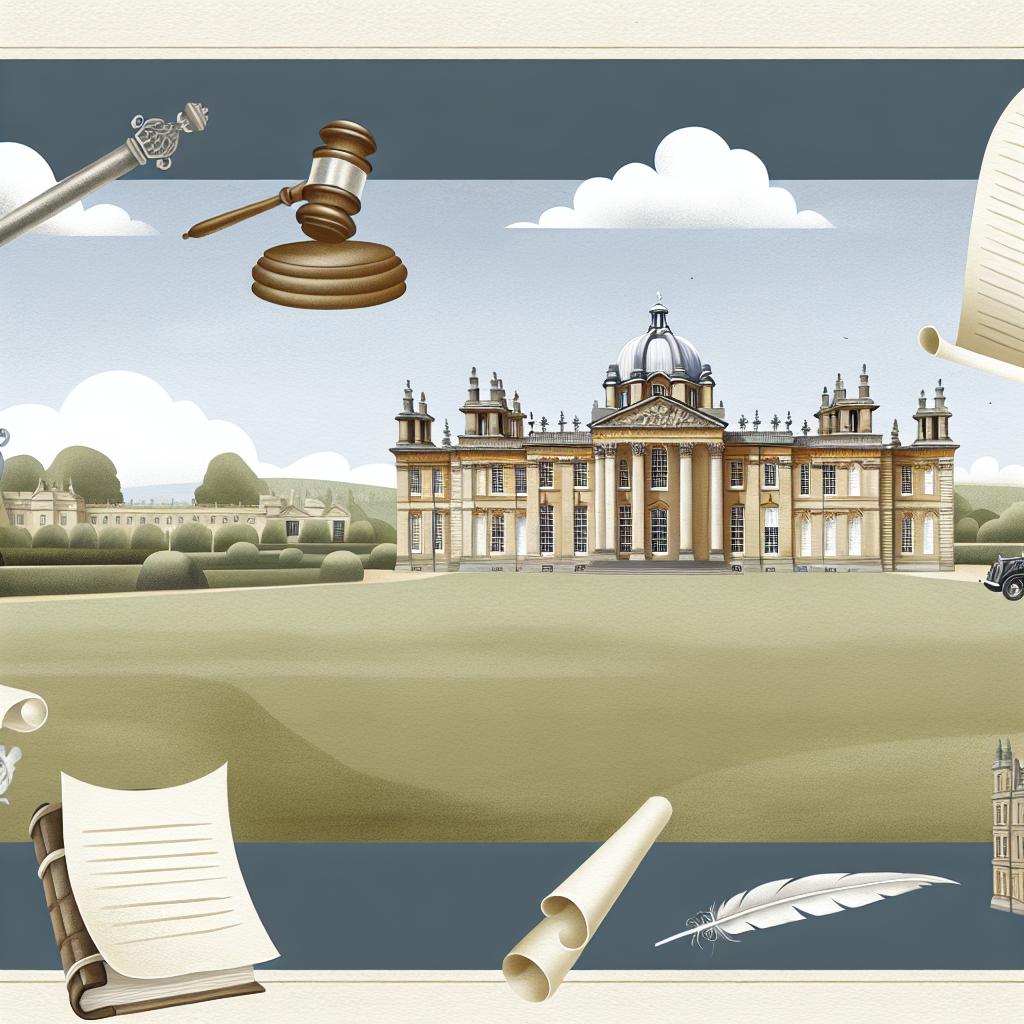Contents
The Historical Importance of Blenheim Palace
Blenheim Palace, situated in Woodstock, Oxfordshire, is a testament to both British history and architectural achievement. This remarkable monument of English Baroque architecture captures the essence of national pride and has stood the test of time as an emblem of Britain’s rich cultural heritage.
Foundation and Architecture
The conception of Blenheim Palace is deeply intertwined with the military and political successes of John Churchill, the 1st Duke of Marlborough. In recognition of his triumphs during the War of the Spanish Succession, particularly his decisive victory in the Battle of Blenheim on August 13, 1704, the British Crown bestowed the honor of this magnificent estate upon him. The palace derived its name from this historical battle, ensuring that the memory of the Duke’s contributions would endure through the centuries.
The architectural vision for Blenheim Palace was crafted by the renowned duo, Sir John Vanbrugh and Nicholas Hawksmoor. Commenced in 1705 and reaching completion in 1722, the palace exemplifies boldness and grandeur in architectural design. The use of strong symmetry, towering facades, and intricate detailing reflects the characteristics typical of English Baroque, making Blenheim Palace not just an abode but a masterpiece that captures an era’s spirit.
Political and Historical Significance
Blenheim Palace holds more than architectural significance; it stands as a crucial political symbol for Britain. Serving as the residence of the Churchill family for several generations, the palace has been intertwined with the nation’s political and historical tapestry. Perhaps the most notable resident was Sir Winston Churchill, Britain’s iconic Prime Minister during World War II, who was born within the palace’s walls in 1874.
Over the years, the palace has been a setting for various diplomatic and political gatherings, reflecting the shifting narratives of the British Empire. It has played host to meetings and events that have had lasting impacts on both domestic and international fronts, showcasing its role as a bastion of British sovereignty and historical development.
Cultural Heritage
Beyond being a historical monument, Blenheim Palace actively contributes to Britain’s cultural landscape. It is an essential part of Britain’s living history, a dynamic venue hosting events and exhibitions that deepen public engagement with the arts and the heritage of the country. The palace’s extensive art collection is a veritable treasure trove, portraying the evolution of British art across the centuries.
The stunning gardens, meticulously maintained, alongside the opulent interiors of the palace, offer a vivid glimpse into life during the 18th century, an era of elegance and grandeur. Through its galleries and rooms, visitors are offered a window into the lives of the aristocracy of the past, learning about their customs, tastes, and influences that shaped British culture as we know it today.
Preservation and Tourism
As a recognized UNESCO World Heritage Site, Blenheim Palace stands as a tribute to the cultural and historical wealth of Britain. As a premier tourist attraction, it draws countless visitors from around the globe each year, all eager to uncover its stories and legacy. The estate’s preservation efforts are crucial, ensuring that the beauty and history embedded within the palace remain intact for future generations to appreciate.
The palace is committed to maintaining this vital piece of British history, balancing the objectives of conservation with the demands for public engagement and tourism. Guided tours, interactive exhibits, and educational programs seek to enhance visitor experience, making the history accessible to a diverse audience.
For those planning to visit Blenheim Palace, detailed information about its offerings, events, and history can be accessed through its official website or through other reliable travel resources. This assists in planning an enriching visit to a site where history, culture, and natural beauty converge impressively.

